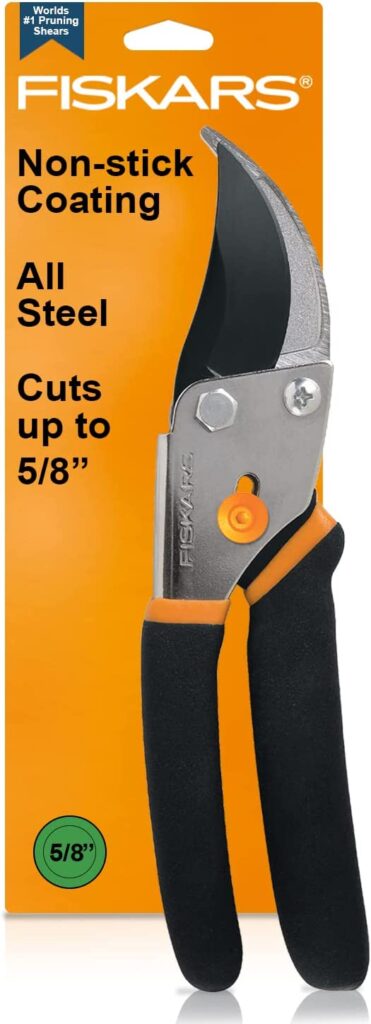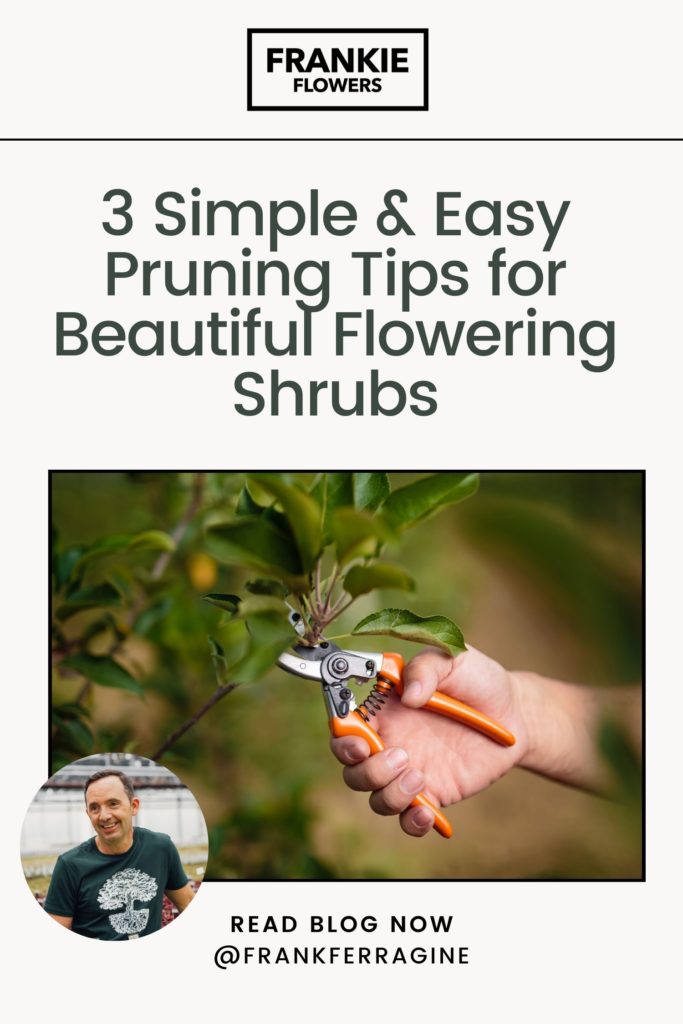What Should I Prune in Spring?
It’s time to rid your plants of their split ends! Those rough, scraggly branches only hold them back. Pruning should be part of your spring garden routine. The question is – what to prune and when? I have a few easy to remember pruning tips that will help you set your plants, shrubs, and trees up for success.

Why Prune Plants?
Look at pruning as a tool in your horticulture tool belt. (If it happens to be a Felco 2, I’m sending mad respect.) Cutting back your trees and flowering shrubs helps keep them healthy and beautiful. Pruning plants gives them a boost to get growing!
- Dead or sick branches eat up energy that could go to healthy parts of the plant. Removing them lightens the load and helps stop the spread of disease.
- Dense branches stop light and air from properly circulating. Taking out inward-facing stems helps open up the centre of your plant.
- Misshapen or uneven branches can look awkward and are more likely to break if your tree or shrub is top-heavy. Pruning helps maintain a nice shape and form (I wish a little pruning were all it took for me!)
- If your plant feels down and lazy, pruning gives it a new lease on life, stimulating growth and kicking it into high gear.


In need of an affordable pair of sheers?
Give these Fiskars Traditional Bypass Pruner a try!
- Ideal for cutting stems and light branches
- Fully hardened, precision-ground steel blade stays sharp, even through heavy use
- Low-friction coating helps blade glide through wood, prevents the blades from gumming up with sap and debris and helps the blades resist rust
- Self-cleaning sap groove keeps the blade from sticking for easy operation
- All-steel design provides excellent durability for lasting value
When Should I Prune in Spring?
Pruning can be one of the first things you do. Once the snow starts to clear and you’re itching to get back in the garden, grab your pruners and head out! Walk your property and look for any damage Jack Frost threw your way – winter can be hard on trees and perennial shrubs.
High winds, freezing rain, and heavy snow can weigh down and snap branches. Bunnies and other creatures will nibble on anything they can reach when food sources are slim in the middle of winter.

What Do I Prune in Spring?
Not everyone in your garden wants a spring prune. Plants that bloom on new growth are safe to prune in early spring (pee gee hydrangea, roses). Others grow on old wood (lilacs, forsythia) and have been prepping their blooms since last year. If you prune them early in the season, you can take off the growth ready to bloom.
A no-fail tip is to prune after bloom! If you get into the habit of cutting back your flowering shrubs right after they bloom, you won’t ever trim off new buds.

How do I Cut Back Flowering Shrubs & Trees?
- Use sharp, clean shears. Rough cuts encourage bacteria and diseases to grow on newly trimmed branches.
- Cut at a 45-degree angle so water droplets will bead off.
- Start with dead wood (black stems on roses but can look white on other plants).
- Take a step back and look at the shape. For aesthetics, but also safety. Are there low-hanging branches that will snag passers-by? Is there uneven weight distribution increasing the chances of broken limbs?
- Look to crowded areas reducing airflow. Cut back any inward-growing branches so light and air can circulate easily.

Generally, only cut back 1/3 of your plant at a time. Any more than that, and you risk sending your shrub or tree into shock. Pruning your garden in spring will help clean it up, promote new growth, and set your plants up for a healthy growing season!
If you have more pruning questions, join the conversation on Facebook or Instagram.




